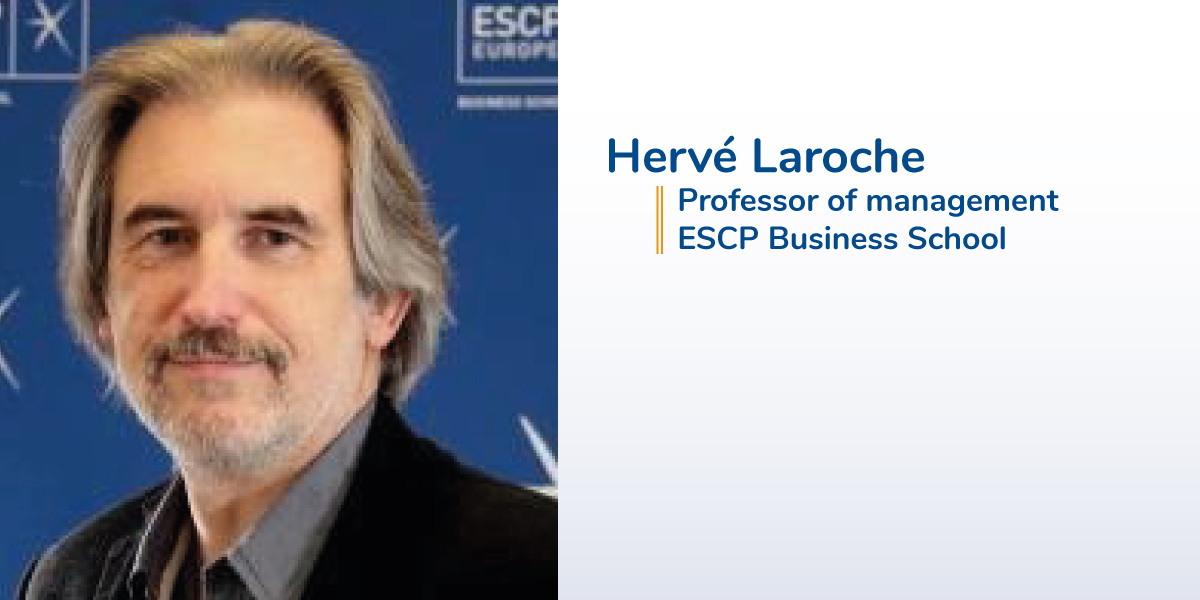Risk Management & COVID -19: Approaches to Decision-making
 Risk Management & COVID -19: Approaches to Decision-making
Risk Management & COVID -19: Approaches to Decision-making
What are the classical approaches to decision-making? What is the contribution of the Naturalistic decision-making movement? What levers can be used to overcome the crisis? What are the opportunities for risk management? In the following, we hear the views of Hervé Laroche, Professor of Management at ESCP Business School who participated in the Icsi webinar on April 8, 2021.
| What are the classical approaches to decision-making? |
Whether in economics, psychology or technical fields, decision-making is understood in terms of a rational normative model. Deciding involves:
- collecting information to make an accurate diagnosis,
- drawing up a list of potential actions,
- assessing the consequences of each of these actions,
- and choosing the best solution as a function of predefined objective criteria.
In general, the more systematic, formalized, and programmed this process is, the better. But, in psychology, it quickly becomes apparent that humans are not very good at applying this rational model. Not only does it take them a long time, but they can also make mistakes. In response, one research program set out to identify these deviations from the rational norm, and identify the common mistakes that people make: we call these cognitive biases. There are hundreds, if not thousands of them. This approach is illustrated by the award of the 2002 Nobel Prize in Economics to Daniel Kahneman.
The practical consequences of this rational and normative view of decision-making are important: humans are considered unreliable. They must therefore be closely supervised or provided with tools that can do most of the work for them, notably the collection and processing of information (information systems, , algorithms, etc.).
| What is the alternative vision of the Naturalistic decision-making movement? |
The key word here is ‘naturalistic’. The naturalistic approach to decision-making, initiated by Gary Klein, began with a critique of the methods that were used to establish cognitive bias theory. Klein noted that research focused on individuals who were asked to undertake very simplified tasks, in abstract contexts (laboratory experiments). He argued that what happens in the field is very different, especially when dealing with skilled individuals, people who have become experts in their work, which is carried out in realistic and complex contexts. The firefighter, the surgeon, the airplane pilot or the train driver cannot be studied in the laboratory. They must therefore be observed by spending time with them in the field.
With this as a starting point, he shows that while the actual behavior of these decision-makers is very different to the assumed rational model, it is nevertheless very effective. Some characteristic features emerge from these expert decisions:
- Their experience means that experts can ‘recognize’ situations. He or she is able to make an immediate diagnosis, based on very little information. And, in general, the correct solution is obvious to them. He or she does not compare several solutions, or look for the best solution. Instead, they ensure that their solution is sufficient. It is an intuitive operation based on specialized knowledge.
- These experts do not operate by applying abstract models to situations. They store the knowledge they have accumulated in the form of automated actions in simple cases; and as stories for complex cases. These stories become part of their history, and are often shared within a community of experts.
In this vision of decision-making humans can, of course, make mistakes, but they are also a factor of reliability because they are able to make sense of complex situations. They can even engage in creative thinking, they can find innovative solutions that are appropriate to the situation, something that even intelligent automated systems are incapable of doing.
| In which contexts is this approach typically used? |
The naturalistic approach is primarily aimed at situations characterized by a high degree of uncertainty, variability and complexity. The method is particularly suited to emergencies.
On the other hand, the approach is more focused on decision-making at the individual or small group level. Where it performs less well is in characterizing situations where collective and organizational dimensions dominate. Organizations or complex socio-technical systems are better-suited to solutions based on the Resilience Engineering approach.
| What levers can be used to overcome the current crisis? |
The current period is marked by an overriding obsession to hold decision-makers to account. The latter must constantly justify their decisions. Research has shown that when experts are asked to explain and justify their choices while they are in the middle of taking action, the quality of their decisions deteriorates. They make more mistakes and their solutions are less relevant. Therefore, one direct implication would be to better-protect those responsible, and keep them out of the public eye.
Another important point to note is that it is unrealistic to think that one decision-maker can understand all of the dimensions of the decisions that are made. The same observation applies to complex organizations. We need to move away from this understanding of the decision, and this needs to happen at the societal level.
| What does the future of risk management look like? |
One of the principle current (and future) topics is the integration of intelligent systems (AI) into decision-making. In the medium term, these systems will not completely replace human decision-making. The human decision-maker will, therefore, have to take decisions in conjunction with the system. For this partnership to work, we need to know not only how the system understands the human, but also how the human understands the system. But this is not at all easy. There is a broad and deep literature on the topic: how do humans explain what intelligent systems do? How do they explain it to themselves? And how do they explain it to others? The key point that has emerged from many studies is that humans remain central because they have the ability to make sense, to find reasons, to explain, to justify, and to communicate.



